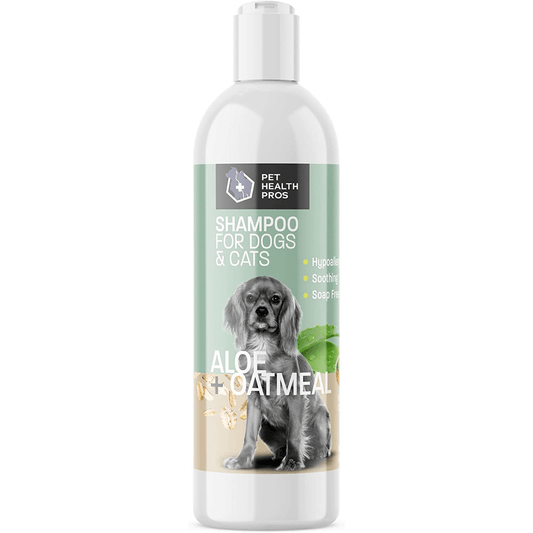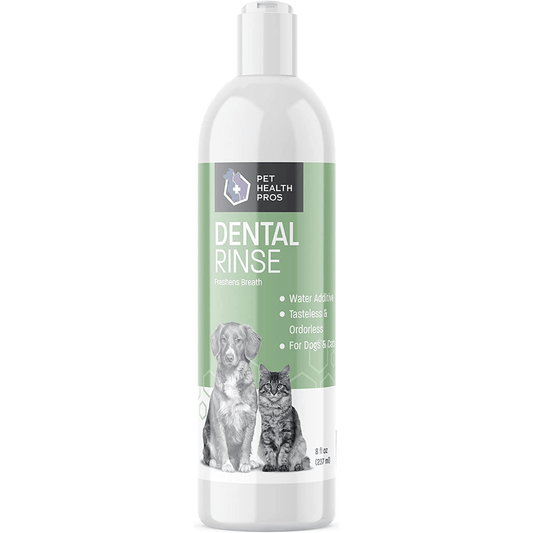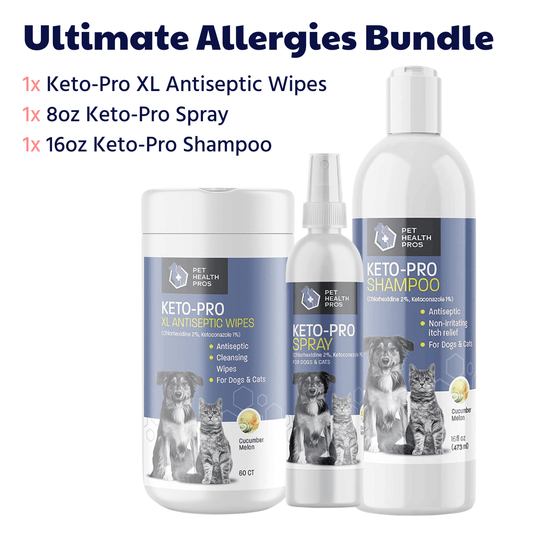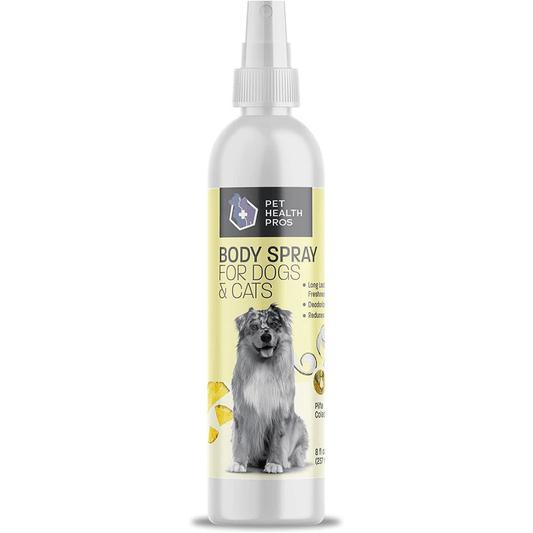Ringworm is a common skin infection that can affect dogs, and understanding how do dogs get ringworm is essential for pet owners. This fungal infection can cause discomfort and health issues for your furry friend, but with the right knowledge, you can take steps to prevent it. In this article, we’ll explore what ringworm is, how it spreads, and how to keep your dog healthy and happy.
Key Takeaways
- Ringworm is a fungal infection, not a worm, that can affect dogs and cause skin lesions.
- Direct contact with infected animals or contaminated environments is a primary way dogs get ringworm.
- Young puppies and dogs with weakened immune systems are more susceptible to ringworm.
- Regular grooming, hygiene, and avoiding high-risk areas can help prevent ringworm in dogs.
- If you notice severe symptoms in your dog, consult a veterinarian for proper diagnosis and treatment.
Understanding Ringworm In Dogs
Ringworm in dogs? Sounds kinda gross, right? It's actually not a worm at all! It's a fungal infection that can cause some pretty annoying skin issues for our furry friends. Let's break down what ringworm is, how it affects dogs, and what to look out for.
What Is Ringworm?
Ringworm isn't a worm; it's a fungal infection. The fungi that cause ringworm feed on keratin, which is found in skin, hair, and nails. There are several species of fungi that can cause ringworm in dogs, with Microsporum canis being the most common. It's super contagious and can spread between animals and even to humans, so understanding it is key.
Symptoms of Ringworm
Okay, so how do you know if your dog has ringworm? Here are some things to watch for:
- Circular Lesions: These are the classic ringworm sign. They often look like raised, circular patches of hair loss, sometimes with a red ring around the edge. But don't be fooled; they might not always be perfectly ring-shaped.
- Hair Loss: Ringworm can cause patchy hair loss, which might not always be in a circular pattern. You might just notice thinning fur in certain areas.
- Scaly or Crusty Skin: The affected areas can become scaly, crusty, and inflamed. It might look like your dog has dandruff in certain spots, but it's more persistent.
- Itchiness: While not always the case, ringworm can cause itching. Your dog might be scratching or licking the affected areas more than usual.
- Nail Infections: In some cases, ringworm can infect the nails, making them brittle, cracked, or deformed.
It's important to remember that not all skin issues are ringworm, and not all ringworm cases look the same. If you notice any unusual skin changes on your dog, it's always best to consult with a vet to get a proper diagnosis.
How Ringworm Affects Dogs
Ringworm can be more than just a cosmetic issue. While it's usually not life-threatening, it can cause discomfort and secondary infections if left untreated. Here's how it can affect dogs:
- Compromised Skin Barrier: Ringworm damages the skin, making it easier for bacteria and other pathogens to invade. This can lead to secondary bacterial infections, which can cause more serious problems.
- Spread to Other Animals and Humans: Ringworm is zoonotic, meaning it can spread from animals to humans. This is a big concern, especially if you have kids or other pets in the house. Practicing good hygiene is important to prevent transmission.
- Persistent Infection: Without proper treatment, ringworm can persist for weeks or even months. The longer it goes untreated, the more likely it is to spread and cause complications. Early detection and treatment are key to managing ringworm effectively.
Common Causes of Ringworm Transmission
Ringworm isn't caused by worms, despite its name! It's a fungal infection, and understanding how it spreads is key to prevention. It's pretty common, so knowing the transmission routes can really help keep your dog safe.
Direct Contact with Infected Animals
The most common way dogs get ringworm is through direct contact with another infected animal. This could be another dog, a cat, or even a wild animal like a rodent. If your dog plays with or is housed near an infected animal, the chances of transmission are high. It's not just about physical touch either; sharing bedding or grooming tools can also spread the fungus.
Environmental Factors
Ringworm spores are tough and can survive in the environment for a surprisingly long time – sometimes months! This means your dog can pick up ringworm simply by being in a contaminated area. Think about places like dog parks, kennels, or even your own backyard if an infected animal has been there.
Here's a quick look at spore survival times:
| Surface Type | Survival Time |
|---|---|
| Soil | Up to 3 months |
| Bedding | Up to 18 months |
| Grooming Tools | Up to 12 months |
Human Transmission
Yep, humans can spread ringworm to dogs, and vice versa. If you have a ringworm infection, you can transmit the fungal spores to your dog through direct contact or by touching surfaces your dog then comes into contact with. It works the other way too; if your dog has ringworm, be careful when handling them and always wash your hands thoroughly afterward.
It's important to remember that ringworm is highly contagious. If you suspect your dog has ringworm, it's best to isolate them from other pets and humans until they've been treated and cleared by a vet.
Risk Factors for Dogs
Ringworm doesn't discriminate, but some dogs are more likely to get it than others. It's kind of like how some people catch a cold super easily, and others seem immune. Let's break down the main things that make a dog more at risk.
Age and Health Status
Puppies and older dogs are way more prone to ringworm. Why? Their immune systems aren't as strong. Puppies are still developing immunity, and older dogs might have weakened immune systems due to age or other health issues. Think of it like this: a healthy adult dog has a shield up, but puppies and seniors have gaps in their armor.
- Puppies: Immune systems still developing.
- Senior Dogs: Immune systems weakening with age.
- Compromised Immunity: Dogs with underlying health conditions.
Living Conditions
Where a dog lives makes a huge difference. Dogs in crowded places, like shelters or kennels, are at higher risk. It's simple math: more dogs = more chances for the fungus to spread. Also, places that aren't cleaned well can harbor ringworm spores for a long time.
- Shelters: High density of animals.
- Kennels: Shared spaces increase risk.
- Poor Sanitation: Spores thrive in unclean environments.
A clean environment is key. Regular disinfection of bedding, grooming tools, and common areas can significantly reduce the risk of ringworm transmission.
Exposure to Other Animals
If a dog hangs out with other animals, especially if those animals go outside a lot or come from unknown backgrounds, the risk goes up. Think about it: a dog that plays with a bunch of other dogs at the park is more likely to encounter ringworm than a dog that stays home all day.
- Dog Parks: Increased contact with other dogs.
- Multi-Pet Households: Higher chance of transmission.
- Unknown Animals: Risk of exposure from stray or untested animals.
Preventing Ringworm in Dogs
So, you want to keep your furry friend safe from ringworm? Good call! It's way easier to prevent than to treat. Here's the lowdown on how to keep your dog's skin healthy and ringworm-free.
Regular Grooming and Hygiene
Think of grooming as more than just making your dog look good; it's a key part of their health routine. Regular brushing helps remove loose fur and skin cells, which can be breeding grounds for fungus.
- Brush your dog several times a week, especially if they have long hair.
- Bathe your dog regularly, but not too often. Over-bathing can dry out their skin, making them more prone to infection. Once a month is usually good, unless they get really dirty.
- Use a dog-specific shampoo. Human shampoos can be too harsh and mess with their skin's natural balance.
Vaccination and Health Checks
While there isn't a ringworm vaccine widely available or considered a core vaccine, keeping your dog up-to-date on their other vaccinations and regular health checks is super important. A healthy dog is better equipped to fight off any infection, including ringworm.
- Make sure your dog is current on all recommended vaccines.
- Schedule regular check-ups with your vet. Early detection of any health issues can make a big difference.
- Talk to your vet about boosting your dog's immune system if they have a history of skin problems.
Avoiding High-Risk Areas
Ringworm loves damp, crowded places. Think kennels, dog parks, and even grooming salons. While you can't keep your dog in a bubble, being smart about where you take them can lower their risk.
- Be cautious at dog parks. Watch for signs of illness in other dogs and avoid areas that look dirty or poorly maintained.
- Choose reputable kennels and groomers. Ask about their cleaning and disinfection practices.
- Avoid sharing toys or bedding with other dogs, especially if you don't know their health history.
Keeping your dog away from places where ringworm is more likely to spread is a simple way to protect them. It's all about being aware of the risks and taking steps to minimize exposure. A little caution can go a long way in keeping your dog healthy and happy.
Treatment Options for Ringworm
So, your dog has ringworm. It's not the end of the world! There are several ways to tackle this fungal infection. Let's walk through some common treatment options.
Topical Treatments
Topical treatments are often the first line of defense, especially for mild cases. These usually come in the form of creams, ointments, or antifungal shampoos. The key is consistency; you'll need to apply the medication as directed by your vet, usually for several weeks, even if the symptoms seem to clear up quickly. Make sure to wear gloves during application to avoid spreading the fungus to yourself.
Oral Medications
For more severe or widespread cases, your vet might prescribe oral antifungal medications. These drugs work from the inside out to kill the fungus. Oral medications can have potential side effects, so it's important to follow your vet's instructions carefully and monitor your dog for any adverse reactions.
Home Remedies
While not a substitute for veterinary care, some home remedies can complement traditional treatments.
- Diluted apple cider vinegar: Applying a diluted solution to the affected areas may help, but always consult your vet first.
- Coconut oil: Its antifungal properties might offer some relief, but it's not a primary treatment.
- Good hygiene: Regularly cleaning and disinfecting your dog's environment can prevent the spread of the fungus.
It's important to remember that ringworm treatment requires patience and consistency. Always consult with your veterinarian to determine the best course of action for your dog's specific situation. Don't try to self-diagnose or treat without professional guidance, as this could lead to complications or a prolonged infection.
When to Consult a Veterinarian
It's easy to get caught up in trying to handle things yourself, but sometimes, you just need a vet. Ringworm can be tricky, and knowing when to get professional help is super important for your dog's health and your own peace of mind.
Recognizing Severe Symptoms
Okay, so you've noticed some itchy spots, maybe some hair loss. But how do you know when it's more than just a minor skin issue? Keep an eye out for these signs that scream "vet visit ASAP!":
- Large, inflamed lesions that seem to be spreading quickly.
- Signs of secondary bacterial infections, like pus or a foul odor.
- If your dog is excessively scratching, biting, or licking the affected areas, causing self-harm.
If you see any of these severe symptoms, don't wait. Ringworm can sometimes lead to more serious problems if left untreated, and a vet can help prevent that.
Understanding Treatment Plans
So, you've been to the vet, and they've laid out a treatment plan. Great! But what if you're not quite sure about something? Don't be shy about asking questions. It's your dog, and you need to understand what's going on. Here are some things to consider:
- Make sure you understand the dosage and frequency of any medications.
- Ask about potential side effects and what to watch out for.
- Clarify how long the treatment is expected to last and what to do if you don't see improvement.
Follow-Up Care
Even after the ringworm seems to be gone, follow-up care is important. Ringworm can be stubborn, and sometimes it comes back. Your vet will likely want to do follow-up exams to make sure the infection is completely cleared. This might involve:
- Regular check-ups to monitor your dog's skin and coat.
- Additional testing, like fungal cultures, to confirm the absence of the fungus.
- Adjustments to the treatment plan if the infection recurs.
If your pet is acting strange, not eating, or seems to be in pain, it might be time to see a vet. Don’t wait too long, as early help can make a big difference. For more tips on when to take your furry friend to the vet, visit our website today!
Final Thoughts on Ringworm in Dogs
In summary, ringworm is a common issue that can affect dogs, and understanding how it spreads is key to keeping your furry friend safe. It often comes from contact with infected animals or contaminated surfaces. Regular grooming, keeping your dog's environment clean, and avoiding contact with sick animals can help prevent ringworm. If you suspect your dog has ringworm, it’s best to consult your vet for proper diagnosis and treatment. By staying informed and proactive, you can help ensure your dog stays healthy and happy.
Frequently Asked Questions
What is ringworm in dogs?
Ringworm is a fungal infection that affects the skin, hair, and nails of dogs. It can cause circular patches of hair loss and is contagious.
How do dogs get ringworm?
Dogs can get ringworm through direct contact with infected animals, contaminated surfaces, or even from humans who have the infection.
What are the signs of ringworm in dogs?
Signs of ringworm include hair loss in circular patterns, redness, itching, and scaly skin. Some dogs may also have bald spots.
Can humans catch ringworm from dogs?
Yes, ringworm can be transmitted from dogs to humans, especially if there is direct contact with the infected area.
How can I prevent my dog from getting ringworm?
To prevent ringworm, keep your dog's living area clean, avoid contact with infected animals, and maintain regular grooming.
What should I do if I think my dog has ringworm?
If you suspect your dog has ringworm, take them to a vet for a proper diagnosis and treatment plan.








